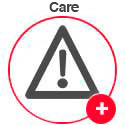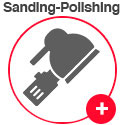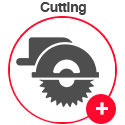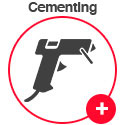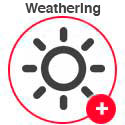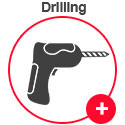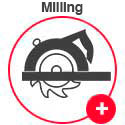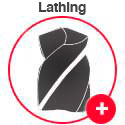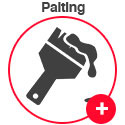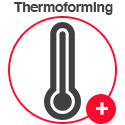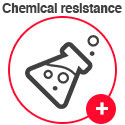Handling & Maintenance
The sheets are sold covered with masking paper or with a polyethylene, so that, the sheets are protected against dirt and moisture. This paper should be remain intact during the storage of the sheet to minimize stains. The sheets should be stored in vertical position or put in a place where the sheets keep on an angle of 10 degrees with respect to the vertical. Do not place the sheets in horizontal position because the sheets could warped. The sheets should not be place near a heat source, like radiators, central heating, steam pipes, etc. The sheets should not be storage in rooms where solvent vapor exist, because these can penetrate the masking paper, e.g, laboratories, spray painting rooms.

How to remove the masking paper
The masking paper should be left adherent to the sheet as long as possible. There are certain processes that require the removed of the masking paper such as thermoforming. If the paper can not be removed easily you have to use solvents like kerosene , aliphatic naphtha or hexane Do not use regular naphtha or a sharper point to remove the masking paper. All the rest of remanent of solvent must be remove of the surface.
. . . . . . . . . . . . . . . . . . . . . . . . . . . . . . . . . . . . . . . . . . . . . . . . . . . . . . . . . . . . . . . . . . . . . . . . . . . . . . . . . . . . . . . . . . . . . . . . . . . . . . . . .
Cleaning of Vical S.A. acrylic sheet
Wash the sheet with neutral soap or detergent and warm water pressing slightly with a clean an smooth cloth. Rinse with clean water and dry with a chamois. The grease or oil can be removed with hexane of high grade, aliphatic naphtha or kerosene. Any oil film that remain of these solvent should be eliminated washing with water and soap. If you want to get a maximum surface cleaning with a high antistatic effect use the product Limpiacrilof Vical.
. . . . . . . . . . . . . . . . . . . . . . . . . . . . . . . . . . . . . . . . . . . . . . . . . . . . . . . . . . . . . . . . . . . . . . . . . . . . . . . . . . . . . . . . . . . . . . . . . . . . . . . . .
Acrylic sterilization methods Vical
RESIST Gamma ray sterilization; Gas sterilization.
NOT RESIST Autoclave; Sterilization with dry air; Sterilization chemical disinfectant.
Vical plates are not permeable to nitrogen, oxygen and carbon dioxide gases.
. . . . . . . . . . . . . . . . . . . . . . . . . . . . . . . . . . . . . . . . . . . . . . . . . . . . . . . . . . . . . . . . . . . . . . . . . . . . . . . . . . . . . . . . . . . . . . . . . . . . . . . . .
Warning In The Use Of Acrylic
»DO NOT PUT the acrylic near a source of heating, because the acrylic near a source of heating, because the acrylic could be deformed at temperature above 92 C.
» DO NOT EXPOSE the acrylic to SOLVENT VAPOURS(except aliphatic hydrocarbons) because it can be affected and form crazing (see cleaning of acrylic).
» When handling the acrylic be sure not to provoke scratches. Although the hardness of this material is similar to the aluminum, you must be careful not to contact the surface of the acrylic with anything sharp or aggressive. Its advisable not to remove the plastic protection until the previous moment the material is used.
» The acrylic is a material with a high electrical resistance,this generates static charge when its ruble with another surface. This static charge could attract the air dust. Its advisable to use a wet cloth to diminish or use an antistatic cleaner (Limpiacril).
» Take into account the thermo-expansion of the acrylic. With an increase or decrease of 10 C the acrylic expands or shrink 0.7 mm per meter.
» There are different types of acrylic for different uses. Ask for advise to the company according to the end use that you will give to the product.
